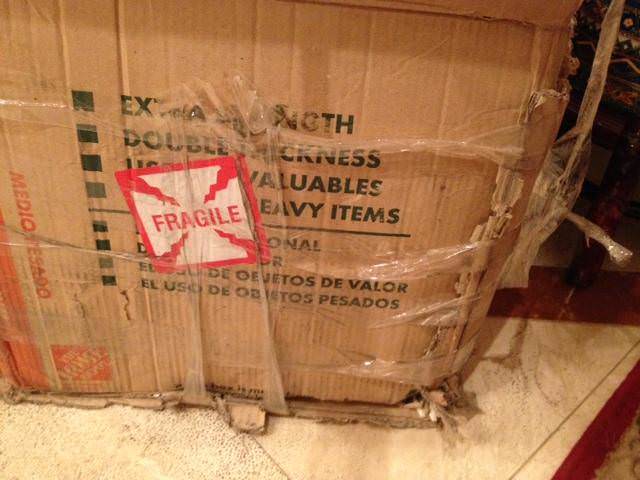The international e-commerce market is enormous.
In 2015, e-commerce sales reached 1.55 trillion US dollars. But as the market grows and attracts new players, it will take even more skill to attract customers to your store.
One way to keep customers happy and get them coming back is to master your e-commerce fulfillment.
If you don’t deal with e-commerce fulfillment problems now, they will only become harder to fix as your business grows.
Read on to find out what the biggest e-commerce fulfillment problems are, and how you can stop them in their tracks.
1.
Problem: eCommerce Fulfillment Across International Borders
Getting orders from outside of your country is a bit of a mixed blessing.
On one hand, it’s incredible that the internet allows you to target such a large market. The world is your oyster!
On the other hand, shipping products internationally comes with tons of rules and paperwork. You need to be able to calculate the different shipping fees and research the taxes and customs charges for each country that you ship to.
Plus, any mistakes in your calculations could cost you money on your sales.
Solution: Plan with a Database or Choose an eCommerce Fulfillment Provider
One way to make sure you’re ready for the different charges you will face as you begin to ship internationally is to plan for everything beforehand.
While it may be time-consuming, building an information database will ensure that you can set prices confidently and that you won’t run into problems down the road.
You will need to look up the shipping rates for different package sizes and weights for each country that you may ship to. Try to research a couple different carriers to make sure that you are getting the best deal.
Use this duty and shipping calculator to get an idea of the rates for each country. Luckily, you won’t have to worry about paying these fees; your customers will be responsible for them.
Still, it is a good idea to know this information in case of customer queries. Plus, you should add a disclaimer to your website, letting customers know that additional import fees may be applicable.
Or, if this sounds a bit complicated, consider an e-commerce fulfillment service provider. They will be able to provide you with all the rate and import fee information you need.
Find out more about international shipping as you build your plan.
2.
Problem: Administrative Errors Chip Away at Customer Trust
Shipping products is complicated.
Getting an item from storage to the customer’s front door takes a lot of coordination across a vast network. Any small error along the way can lead to an unfilled order and an unsatisfied customer. And, the more complaints you get, the fewer people will trust your brand.
Administrative errors can come in many different forms, all along the supply chain. A product could be lost due to an incorrect address, or an error by the shipping company. An error during packing could mean the customer is shipped the wrong item. A misfiled order could mean serious delays.
In any of these situations, the error that caused it might have been small, but the impact on your customer is huge. They will be less likely to trust your store again, and may even post negative reviews documenting their experience.
Solution: Improve Employee Training
The good thing about administrative errors is that you can get rid of them in no time, provided everyone on your team is willing to put in the effort.
Make sure employees know the costs to the company of these errors. Consider putting in place procedures to make sure these errors aren’t being repeated. For example, if products are getting sent to the wrong addresses, make sure all packages are checked over before being shipped out.
These D don’t even have to become permanent. Even instituting them temporarily can help employees build new habits and make avoiding administrative errors second nature.
3.
Problem: Wrong Tracking Codes
![]()
Customers love to receive tracking codes because they know when to expect their package to arrive. If the shipping code you provide them doesn’t work, they are going to be frustrated.
Solution: Always Test Your Codes
This e-commerce fulfillment problem is common but easily solvable.
Make sure that every code is tested before it is passed on to the customer. Even if this means you can’t provide a code right at checkout, it is more important that customers get the right code.
They will be more satisfied in the long run.
Services like Aftership can help, but even with some of the world’s biggest postal services and couriers, there are delays between when a package is shipped and when the tracking is available.
Because of this lag, make sure your customers are aware so you can manage their expectations.
For example, when you are using a platform like Shopify, you may have an API to your shipping partner. When the shipping partner scans the item and then it comes into your system as shipped, you may have your system set up so, once the warehouse’s API has triggered your system that the item has shipped an email is then auto-generated and sent to your customer with the tracking code.
But, here’s the catch, often your warehouse or courier’s internal system has registered the item as shipped, but it actually hasn’t entered into the public tracking system… yet. And, your customer receives their email; then goess online to see the estimated arrival date and …. crickets.
There is not data or even a note that says the tracking code is in the system. Now, you have an upset customer that thinks their is an issue and you get a customer service email…. You get the picture.
Takeaway:
Use tracking codes, but understand how the systems of your shipping partners work and make sure you are not creating confusion by auto-emailing customers before their tracking codes are active on public tracking services.
This will save you a lot of back and forth and customer management.
You can automate, but test the timing delay of your partners and set your email automation to delay the send time so it better coincides with the tracking information when it actually is available for your customer to see.
Find out how to Automate your Aftership Order Fulfillment Tracking process with the Aftership + Floship Integration here!
4.
Problem: Item Out of Stock
An item wasn’t listed as out of stock on your website and a customer ordered it.
You don’t have any to send. Even refunding the product doesn’t really solve the problem.
Not only do you lose the sale, but now you’ve got a frustrated customer. How can they trust your website if they feel that there is no way to know what products are available?

Solution: Apologize Personally and Provide Alternatives
Unfortunately, this problem will probably arise sometimes, no matter how hard you work to keep your website updated.
The best way to respond is to reach out to the customer personally. A phone call is great; otherwise, send a personalized email. Apologize for the inconvenience.
Suggest similar products, and consider providing a discount, or covering the cost of shipping yourself.
5.
Problem: Products Arriving Damaged
Customers will be disappointed when they unpack the product they’ve been anxiously waiting to arrive and it is damaged.
They will be less likely to try ordering from your store again unless you do a great job fixing the situation for them.
Replacing damaged product can quickly become very expensive if it happens frequently.
Not only do you need to send the customer a replacement free of charge, but you’ll need to cover any shipping costs as well.

Solution: Improve Packing Procedures and Shipping Service
In short term, you will want to make things right with the customer.
This means the majority of the time, giving them the benefit of the doubt. Since you can’t prove whether it was damaged in transit, or by the customer themselves, you will just have to trust that they are telling the truth.
Replacing the product promptly, offering your apologies, and maybe even offering a discount on the next purchase will help make sure poor packing hasn’t cost you a customer.
But to really solve this problem, you need to improve your packing. Make sure that you are using durable containers. More containers will be stacked on your package and jostled around during transit, so make sure it can withstand the weight.
Err on the side of caution when it comes to insulation such as bubble wrap. You can see more packing tips here.
Make sure that you are loading pallets properly, never exceeding the weight limit or letting packages hang over the edge.
Conclusions
Running an e-commerce business can be tricky.
All the possible e-commerce fulfillment issues can be a major headache. From administrative errors to damages while shipping, a lot can go wrong.
But, if you can get a handle on the problems we discussed in this list, you will be well on your way to e-commerce success!
Want to give your e-commerce fulfillment an edge? Get a quote today to see how we can help.
The 5 Minute Guide to Scaling Your Shopify Shipping Strategy
Automate Your Fulfillment & Shipping
Deep Dive: More Articles to Help You Overcome E-commerce Challenges
- The Top 10 Open Source eCommerce Platforms
- Shopify Social Secrets – 5 Top-Rated Instagram Apps Every Shopify Store Should Be Using
- A Guide To Choosing The Best Payment Gateway For Your Business
- Cross-Docking Forget Warehousing and Ship Efficiently

Ready To Upgrade Your Logistic Solution?
Speak to Floship ecommerce logistic consultant about improving your global support chain today




